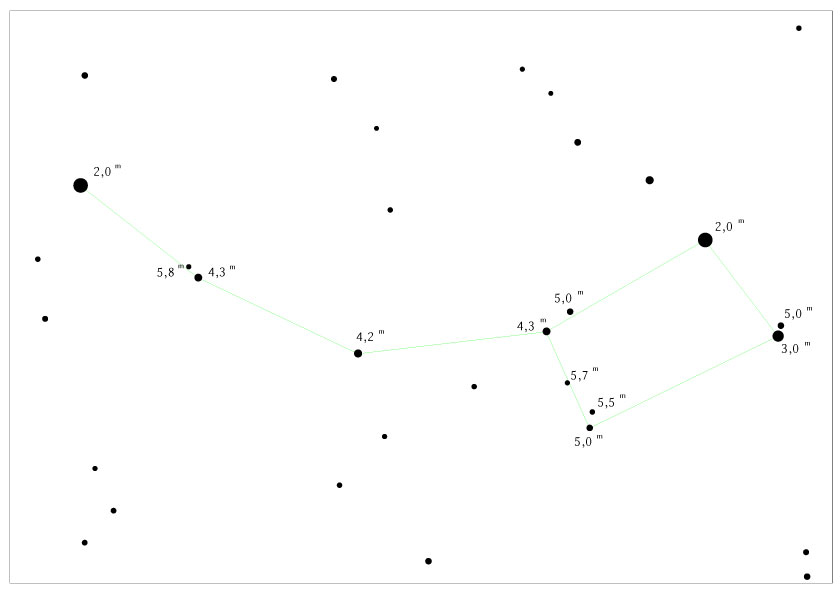The individual kinds of celestial objects are presented in the following chapters. Here we shall only discuss the factors that affect visibility.
The apparent brightness indicates how bright an object is in our sky. The greater its value is, the darker the object appears. 0m describes very bright stars, while stars with 6m are barely visible to the naked eye – at least under ideal conditions. The Sun has an apparent magnitude of -27m.
The brightness is measured in logarithmic units. A star of the first magnitude is not twice as bright as one of the second magnitude, but 2.5 times brighter. A star of third magnitude is 2.5 × 2.5 = 6.25 times fainter than a star of the first magnitude, and so on.
For extended objects the apparent brightness corresponds to the brightness, which they would have were they point-like – because their light is distributed over a larger area, most star clusters, nebulae and galaxies are darker than you might expect from their apparent brightness only. More informative is the surface brightness. It indicates the brightness per unit area and can give you an impression of the real view, but it is difficult to determine.
The diameter of celestial objects is specified in degrees. The sky is divided into 360° (degrees) just like a full circle or the Earth. 1° is subdivided into 60′ (minutes of arc or arc minutes). An arc minute is divided into 60″ (seconds of arc or arc seconds). The full Moon has, as well as the Sun and the Pleiades star cluster, a diameter of about 0.5°, the double star Mizar and Alcor (the middle star of handle of the Big Dipper, which can be separated with the naked eye if you‘ve got good vision) is 12′ apart. Since many indications of size are based on photographic surveys, most objects appear smaller in a telescope than you would expect according to the catalog.
For double stars, there is often an indication of the position angle given in star catalogs. If a line is drawn from the brighter star of a binary to the northern celestial pole, then the position angle indicates how large the angle between this line and the darker component of the star pair is.
If you know the field of view of your binoculars (usually five to seven degrees) and the diameter of the object, you can estimate how large it will appear in the binocular. The brightness tells you if you can see anything at all. Under ideal conditions you can see objects to about 10 or 11m in a binocular, but light pollution and poor visibility conditions decrease the limit. Even then the objects may still be visible, but they are far from a magnificent sight – you‘ll rather see faint nebulae which is barely distinguishable from the background of the sky.

Limiting magnitude and sky brightness can be nicely seen from the stars of the Little Dipper. This constellation contains stars of almost any magnitude – the less you see of it, the less it will be visible in binoculars.
Once you have created a list of interesting, intriguing or challenging goals, you can step out in the night and see what you can find in the sky.
